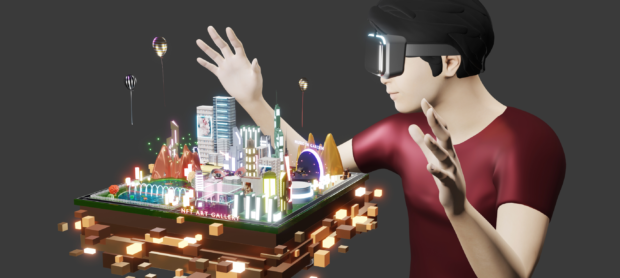The balance of a game, which is an important aspect of development, may make or break a player’s experience. Game balancing software development is crucial because players are drawn to games that provide a fair and challenging experience. This article will explore the key game balancing software development trends for 2023.
The best illustration of game balance as a gaming experience is the Dark Souls series. While the game is known for its complexity, players like the challenges it poses and are pleased when they are able to overcome them. This is an example of how a perfect game balance might result in a distinctive gaming experience. But, game balance encompasses more than simply difficulty. Making ensuring that every part of the game works together to provide the player with a good experience also falls under this category.
One of the major advancements in game-balancing software for 2023 is the use of machine learning. Game designers may use machine learning to analyze player behavior and adjust the game’s difficulty level in order to maintain the game challenging while yet being fair. This kind of game balancing allows for a more tailored gaming experience and boosts player engagement and satisfaction by adjusting to the user’s skill level.
Another development in the development of game balancing software is the use of analytics tools to measure player engagement. By observing player behavior, developers may ascertain which game mechanics are efficient and which ones need to be improved. Using data-driven judgements, this technique helps game designers to balance the game and enhance user pleasure.
Making ensuring that the game’s systems and mechanisms are adequate is another step in the construction of game balancing software. This suggests that each component of the game should have a defined function and that no component should be too powerful or weak. The general balance of the game must be continuously tested and iterated upon since even little changes may have a significant impact.
Another breakthrough in game balancing software for 2023 is the use of user feedback. Surveys, forums, and social media may be used by developers to get feedback from players to identify issues and areas for development. By paying attention to player input while balancing the game, the designers can make sure that it lives up to consumers’ expectations.
The development of game balancing software is a crucial step that may make or break a player’s experience in a game. In 2023, game developers will probably combine machine learning, analytics tools, and player feedback to create challenging but fair, entertaining games that are specifically catered to the players’ delight. These trends suggest that future gaming experiences might be entertaining and well-balanced.

Understanding the Complexity of Game Balancing: Why Creating the Ideal Balance is No Easy Feat
Every player believes they are capable of creating the ideal balance for any game when it comes to game balancing. The reality is that game balancing is a remarkably difficult process that necessitates a profound comprehension of the target audience and the game’s systems and mechanisms. It is difficult to achieve perfect balance, and getting it right takes a lot of testing, iteration, and fine-tuning.
Understanding as many of the different camps of game balance as possible might be helpful for game producers:
1. The first camp is the mathematical camp, which attempts balancing the game using mathematics and equations. This strategy largely focuses on statistical analysis and is based on data-driven decisions.
2. The second camp, known as the “game feel camp,” focuses on making a good gaming experience and relies on players’ subjective feedback. This strategy seeks to make a game that is enjoyable to play and is more artistic and intuitive.
In addition, people frequently mean different things when they talk about balance. Some gamers may be talking about the harmony between various character classes, while others may be talking about the harmony between armor and weaponry. Game developers must comprehend what players mean when they discuss balance in order to resolve players’ complaints and produce a game that lives up to their expectations.
It takes a thorough understanding of the game mechanics, systems, and intended audience to properly balance a game. Understanding as many of the different camps of game balance as possible might be helpful for game producers. Also, in order to design a game that lives up to users’ expectations, game creators must comprehend what people mean when they discuss balance. In the end, finding the perfect balance is a continuous process that needs to be tested, improved upon, and fine-tuned.


Game Theory and Its Role in Balancing
Game balance is a crucial component of game design and is closely related to game theory, a subfield of mathematics. The study of how strategic choices impact a game’s result is known as game theory. Determining the best strategy for each participant, it includes examining how several players and their tactics interact with one another.
Game theory is essential for game balance when it comes to game production. To produce a well-balanced and compelling game, game creators must comprehend the underlying game theory ideas and put them into practice. The best strategy for each player, for instance, must be taken into account by game creators, who must also make sure that the game’s systems and mechanics support these tactics. In order to provide each player with an equal chance of victory, entails balancing the advantages and disadvantages of various characters, tools, and talents.
Moreover, game theory aids game designers in seeing possible problems with the systems and mechanics of their games. The interplay of various players and their tactics may be examined in order to find dominating strategies that can make the game too simple or too complex. So that the game is still difficult yet fair, they may modify the game’s systems and mechanisms.
To sum up, game balance is an important part of game production and is strongly related to game theory, a field of mathematics. By examining how various players interact with one another and their tactics, game theory concepts assist game designers in creating a fair and entertaining game. In order to see possible issues with the game mechanics and systems and make changes to guarantee that the game stays tough yet equitable, game creators must have a solid understanding of game theory.
Game Balancing: Understanding the Difficulty Levels Across Different Game Genres
It’s not simple to balance a game, and some game types might make it especially difficult. The amount of factors that the game designer must compare and balance determines the level of complexity. Due to the complexity of the underlying systems and concepts, some game genres are considerably harder to balance than others, and vice versa.
Games in the fighting, action, shooter, and hyper-casual genres are among the genres that are simple to balance. These game genres are frequently simple and require less balancing of variables. For instance, fighting games typically include a small cast of characters, all of which have distinguishable skills that are simple to contrast and balance. The restricted amount of weapons and skills used in shooter games are also quite simple to balance.
On the other hand, RPGs (single-player), simulations, card games, and casinos are among the types of games that are challenging to balance. These genres require a greater degree of balancing since they are more complicated and incorporate a wider range of factors. RPGs, for instance, have integrated skill trees, equipment, and character growth that can be difficult to balance. Comparable probabilities and elements of change are included in card games and casinos, making it challenging to maintain fairness and interest in the game.
The hardest game genres to balance are tactics, agricultural sims, MMORPGs, and P2E (play to earn) games, to name a few. The mechanics and systems involved in these genres, which are the most complicated, must all be balanced. Examples of strategies include resource management, unit balancing, and AI behavior, all of which can be very difficult to balance.
The difficulty of balancing a game varies depending on its genre and the number of mechanics it has. Fighting, action, shooter, and hyper-casual games are under the easy-to-balance game genres, whereas RPGs, simulators, card games, and casinos fall under the difficult-to-balance game genres. The hardest game genres to balance include tactics, agricultural sims, MMORPGs, and P2E (play-to-earn) games (crypto-games), however the level of complexity ultimately varies depending on the game in question and the number of elements it contains.


Revolutionizing Game Balancing: The Power of Machinations
Machinations is a game balancing software that has taken the gaming industry by storm, providing game designers with a powerful platform to create, prototype, and handoff game systems with ease. The software’s ability to visualize and experiment with different game mechanics and systems has made it an invaluable tool for game balancing. It allows designers to create, connect, and run as many variables and game situations as possible, making it a must-have for game developers who want to create engaging and challenging games.
In order to balance the game and make sure that it offers players an enjoyable and engaging experience, game designers may visualize and test out various game mechanisms and systems using Machinations. This is an excellent tool for game producers who want to ensure that their game stays balanced even after it has been launched since it can automatically connect to the player base and verify that new updates preserve game balance for all players.
Machinations will definitely continue to be a well-liked tool for game creators even as game development trends change. Its cutting-edge functionality and approachable user interface make it the perfect software for creating and balancing games, and its capacity to keep games balanced long after their release is a game-changer for the sector. Machinations is the program for you if you’re a game developer hoping to produce interesting and difficult games that stand out from the competition.
Automating Game Balance with Ludible
Ludible is a game-balancing program that has become a game-changer in a gaming industry that is always changing. With its advanced features and simple user interface, it provides a tool to automate game balance, giving game creators a quick approach to creating fun and challenging games. For game producers who want to save time and make sure their games are balanced, the program has rapidly become a go-to option.
The ability of Ludible to create a game balancing system automatically is one of its most cutting-edge capabilities. The program will handle the rest, so game creators just need to enter the variables and mechanics of their game. In order to make sure the game is entertaining, hard, and equitable for all players, Ludible evaluates the game and creates a balancing system. Due of this functionality, Ludible is a well-liked tool among game developers that want to make unique games in a cutthroat market.
Ludible provides a variety of tools in addition to its automated features to swiftly identify and resolve any game balance problems. Since this tool manages game balance, it frees up game creators’ time and energy to focus on other elements of game creation. With the help of Ludible, game designers may improve the balance of their games, making them more enjoyable, interesting, and well-rounded.
Ludible is expected to be a popular tool for game creators as game development trends change. Its cutting-edge capabilities, such as its capacity to automatically design a game balance scheme and its effectiveness in identifying and resolving balance problems, make it the perfect software for game creators looking to produce original titles.
Excel: The Tried and True Game Balancing Tool for Game Designers
Microsoft Excel continues to be a preferred tool among game designers despite the availability of other sophisticated game balance software solutions. Although it isn’t as eye-catching as some of the other solutions, it is dependable and provides a large number of customizing options.
Excel’s flexibility is one of its main benefits for game balancing. Game designers are able to make their own templates and modify them to their specifications. They can enter default values and work out other numbers that will be utilized in the game using formulas. This enables game designers to fully control the balancing process and make sure the game is balanced.
Accessibility is another benefit of utilizing Excel for game balancing. Excel is a program that almost everyone can use and is not too difficult to master. Because of this, game developers do not have to spend time or money learning new tools before they can begin balancing their games.
Excel is a strong tool for game balancing despite its apparent simplicity. It is still a common option for game designers who wish to make games that are well-balanced because of its versatility and capacity for handling complicated computations.

Exploring Different Approaches to Game Balancing
Although balancing a game can be complex and time-consuming, it is vital to provide gamers a satisfying and challenging experience. There are several ways to balance games, and each has benefits and drawbacks.
1. One approach is the “gut feeling” tactic, in which game designers balance the game based on intuition and past knowledge. This tactic could be effective for skilled designers who have a firm knowledge of game mechanics and player behavior. But, it could also lead to unpredictable and arbitrary results.
2. The “data-driven” approach is an alternative tactic, in which designers acquire and analyze data to inform their balancing judgements. It may take a lot of time and money and need a lot of data and research, but it can be more objective and reliable than going with your intuition.
3. A third approach is known as the “iterative” technique, in which game balance is continually tested and altered in response to user feedback. This approach can be effective for games with a large player base since it enables creators to identify imbalances and immediately fix them. Deploying it, however, can be resource-intensive and disruptive to participants.
The goals of the creators and the game itself eventually determine the best balancing approach. It could also be important to mix different techniques in order to create a game that is enjoyable for all players.
Final Thoughts
In conclusion, game balancing is a crucial aspect of game development that can greatly affect the player experience. It’s obvious that there are many tools and techniques accessible to game designers to build balanced and interesting games as we look ahead to the trends in game balancing software development for 2023.
Game balance involves a thorough understanding of game mechanics, player behavior, and data analysis, whether using cutting-edge software platforms like Machinations and Ludible or the tried-and-true Microsoft Excel spreadsheet.
If you have an idea for a game that needs professional help in the development process, consider contacting Eventyr. Our group of highly competent experts is here to assist you in realizing your goal by working under your direction. For further details, contact us and allow us to assist you in developing the next great game.




